Have you ever been interested in the idea of growing veggies on your balcony?
Have you ever seen those amazing images of rooftop greenhouses and wished you could create them?
Well, both are examples of urban gardening!
What, exactly, is urban gardening?
It’s about growing various plants in urban environments. Urban gardening can be done in a variety of creative ways, from growing plants in containers, on balconies, in vertical farms, or installing a green wall. The options are endless!
There are currently 800 million people who practice urban agriculture in the world, as reported by the Food and Agriculture Organization of the United Nations.
In the United States, urban farming has increased by over 30 percent in the last 30 years, as Phys Org reports.
The bottom line is that urban gardening is an exciting idea that has many benefits for farmers and citizens alike.
Contents
- 1 Urban Gardening Throughout The U.S.
- 2 How You Can Benefit From Your Own Urban Garden
- 3 How To Get Started With Urban Gardening
- 4 How To Get Involved In Urban Gardening If You’re Really Short On Space?
- 5 Where Should You Put Your Urban Garden?
- 6 Creative Containers To Use In Your Urban Garden
- 7 Get The Right Urban Gardening Tools
- 8 What Plants Will Grow In The Shade?
- 9 Beware Of Bugs!
- 10 Start An Organic Garden
- 11 Related Questions
- 12 Conclusion
Urban Gardening Throughout The U.S.
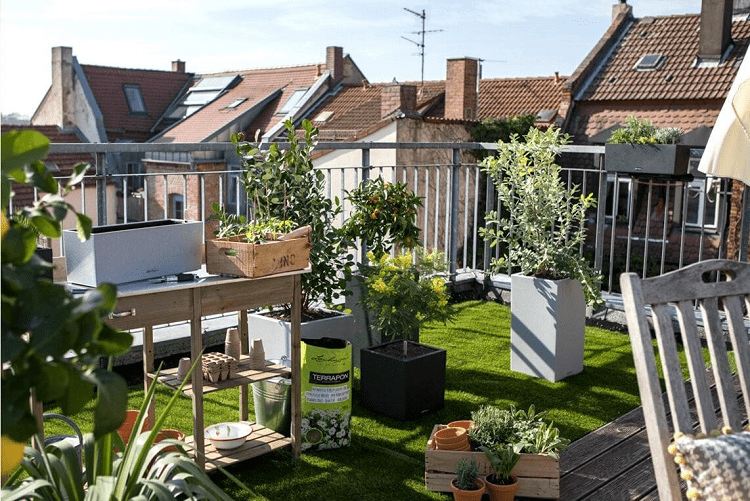
Urban gardening has been on the increase all across the U.S.
This is as a result of factors such as the use of available land as well as innovative development. Urban gardens are flourishing and helping communities in the process.
For example, in New York, there’s Brooklyn Grange, the world’s leading soil rooftop farming company as well as a sustainability center, which grows produce on its office roof!
In Texas, Big Tex urban farms have contributed nearly 100,000 servings of vegetables and fruit to their community since 2016, as The Guardian reports.
One of the biggest advantages of urban gardening and farming is that these green spaces are integrated into cities and they reuse urban resources such as nature reserves and labor and then give back to the community in the form of agricultural products.
Best of all, urban farms can vary when it comes to their production and size – some farms will have crops that are grown in the soil while others will be rooftop greenhouses.
Everyone wins from urban farming. Farmers involved in the practice can gain an income and connect with customers, which will make their goods less expensive to market.
People living in the community can also benefit in surprising ways, such as by seeing their home value increase.
Research published in a Furman Center report found that a community garden has a positive impact on selling prices of homes that are within 1,000 feet of it!
There’s also the environmental boost to consider. Urban farms can help to alleviate the problems of climate change.
A study that was conducted by the University of Cardiff (via Worcester Food Policy Council) found that vertical and rooftop gardens decrease air temperature in their surrounding areas by as much as 20 degrees Fahrenheit.
How You Can Benefit From Your Own Urban Garden
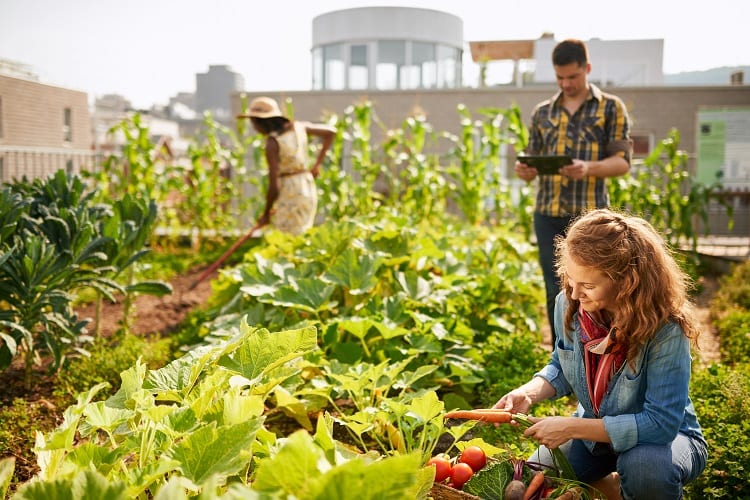
You might not be in a position to start an urban farm, but you can grow your own urban garden.
This has many benefits. For starters, it can give you a sacred slice of nature.
If you live in a small space that’s in the concrete jungle, you might really feel miserable about not having your own backyard or garden in which to grow produce and plants.
Urban gardening can help you achieve this, while also giving you the chance to eat organic food that you grow yourself.
This is better for you and can reduce your grocery bills every month!
Even if you only have a small space for your urban garden, you can still grow some veggies and herbs.
How To Get Started With Urban Gardening
If you’re interested in starting urban gardening where you live, you’ll require the following items:
Pots or containers with adequate drainage
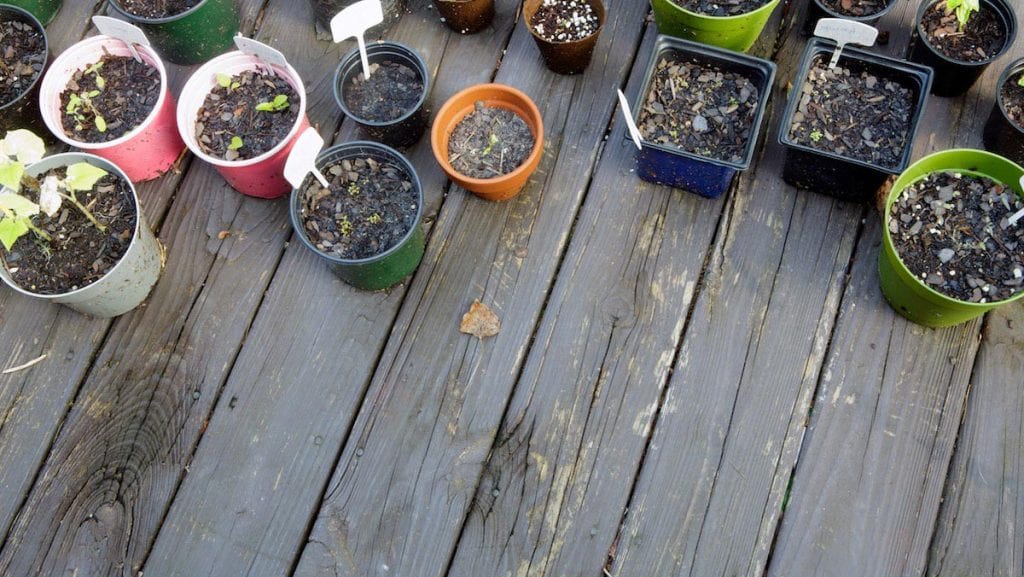
These pots should be large enough for the plants or vegetables you want to grow.
If you’re going the pot route, should you choose plastic or terracotta pots?
Plastic is the way to go if you want to save money. It also makes plants maintain their moisture better so that you don’t have to water them as often.
Terracotta pots are more expensive, but they’re suitable for plants that want air that’s well-aerated, such as orchids and cacti, as Bioadvanced reports.
Quality soil for your plants to grow
Make sure that the pot or container you choose has enough room for soil.
A general guideline is that plants with shallow roots will need a minimum of six inches of soil depth, provided they are shorter than 30cm.
If the roots go deeper, they need a minimum of 30cm of soil depth.
What soil should you use?
Before you run out to collect some soil you find outside, bear in mind that in cities soil can be unsuitable for growing plants.
This is because it tends to be too sandy and it lacks nutrients. So, your best bet is to purchase potting soil, as Fast Company explains.
There are other good reasons to use potting soil. These include that it’s lighter and drains better, as Reader’s Digest reports.
Plus, it’s sterilized so it will kill diseases that could affect your plants, making your job as a gardener much easier.
A spot that gets enough sunshine and not much wind
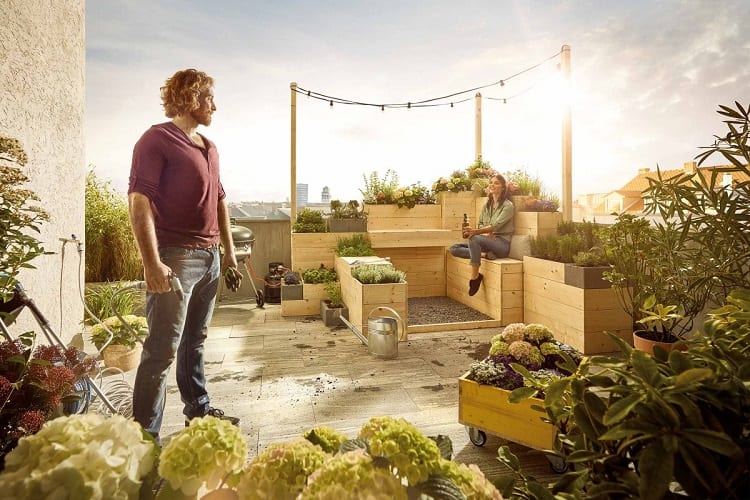
Generally, plants will need between six to eight hours of sunlight every day so make sure that you build your urban garden in the right spot.
You should also avoid putting your plants in windy areas because this will dry them out. It’s a good idea to use a wall to provide shelter from the wind.
Another way in which you can reduce the harmful effect of wind is to place your pots in such a way that the ones in larger pots or containers provide shelter to the smaller ones.
This has another benefit: by putting your pots together, this increases humidity and helps your plants to thrive, as Gardeners reports.
Plants that will thrive
If you don’t have enough space for large plants, such as on your balcony or indoors, then you should choose to grow smaller plants and produce.
You can’t force certain plants to grow if you’re not giving them what they need, whether that means more hours of sun or more space to flourish.
Grow some veggies or herbs – all you need is a windowsill to be able to do that.
In addition, with a smaller space and a more contained environment, you’ll see that you really don’t need to have green fingers in order to be able to grow your own urban garden, however small.
How To Get Involved In Urban Gardening If You’re Really Short On Space?
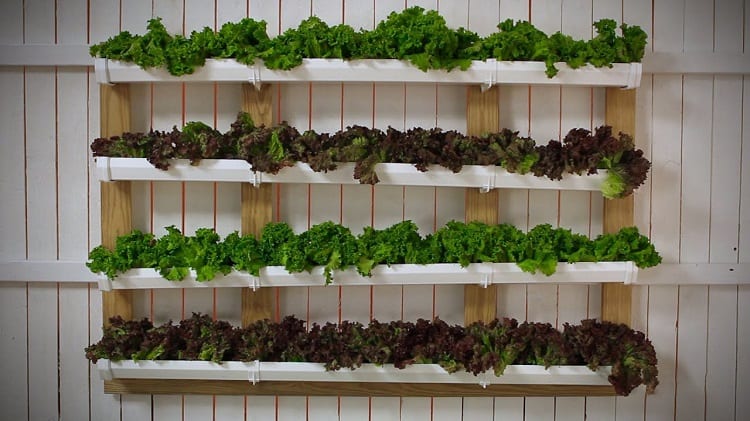
If you hardly have any space in which to garden, you can make a minute urban garden with a few creative ideas.
These include growing upwards! Use wall space, such as on a balcony, to hang small containers in a vertical design.
There are many different types of vertical garden structures. Here are a few ideas to spark your creativity:
- Have a gutter garden. You can organize gutters in various fashions on the wall and then put plants in them. A zig-zag pattern is recommended to drain the water from one row of the gutter to the next.
- Use pallets. Wood pallets can be placed against a wall or even hung on a wall – just make sure you have waterproofing between your plants and planter and put some waterproof fabric along the sides of the pallet so that your soil stays put.
- Secure small containers on the wall. This is one of the easiest ways to make a vertical garden. Just make sure that your pots aren’t too heavy and that you choose plants that can grow in the confined space without suffering.
- Bring in creeper plants. If you really don’t have enough space for a vertical garden, then why not use creeper plants? These can be trained to climb upwards, such as on trellises, and they’re great for adding a burst of green to your home.
- Hang baskets. You don’t have to hang them on a wall. You can hang them from a fence or even from the ceiling. Just make sure they’re not too heavy and well secured to prevent accidents.
Where Should You Put Your Urban Garden?
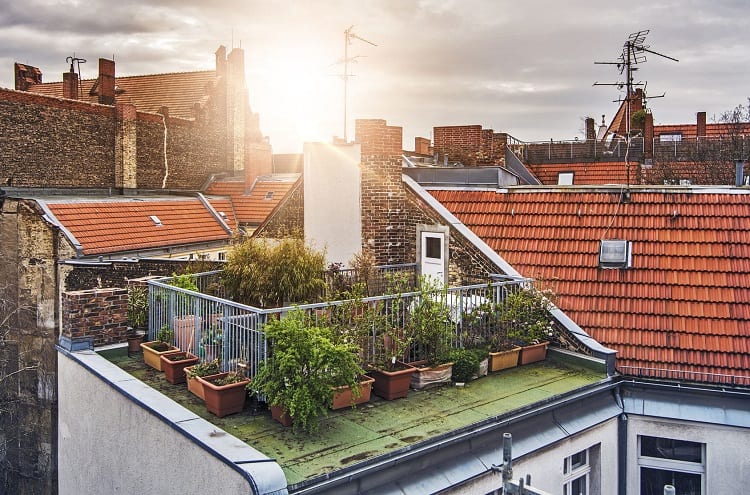
It’s not always easy to know where to set up your urban garden, and finding the right location from the start is important so that you don’t have to change it at a later stage.
Here are some options to consider for your urban garden location:
- Your driveway. If you have a driveway, why not line it with some plants or even veggies? Of course, make sure you have enough space on either side and ideally create a border between your garden and the actual driveway to prevent car tires from squashing your produce.
- Your rooftop. Have a lovely rooftop? Make the most of it by planting things that won’t get harmed by relentless sunshine and storms. Native veggies and plants are your best bet because they will be more capable of dealing with the climate. It’s also a good idea to use containers that you can move under shelter if the weather takes a bad turn.
- Your patio. This is an ideal spot for urban gardening. You can do various things in this space, such as using vertical gardening structures like trellises or turning old pieces of wood such as bird feeders into planters, as One Green Planet reports.
Creative Containers To Use In Your Urban Garden

Not much space for pots?
Even humble mason jars can be used as miniature containers. You can nail them to a board if you like.
Just make sure you don’t put more than one plant in each one. Here are other ideas:
- No floor space? Use hanging baskets. These are a great way to bring some greenery into your home without the hassle of where to put potted plants. They’re also a great solution if you’re renting out your home and can’t make any permanent changes to it without upsetting your landlord.
- Opt for window boxes. You should always ensure that window boxes are securely attached, otherwise, they can be dangerous for people walking underneath them. You should also make sure to buy a window box that has different compartments so you can plant more than one thing in it. If you lump all your plants into one container, they could battle to survive.
How To Group Your Plants Together
Part of the charm of urban gardening if you have limited space is to put different plants together.
This is especially beneficial if you want to grow vegetables in small spaces.
Of course, this can be problematic because the plants might fight or suffocate each other in order to get nutrients and sunshine.
That said, by knowing what plants actually like having company, you can ensure that they thrive.
Here are some vegetable plant combinations that work well: lettuce and herbs can be planted together, as can spinach, onions, and chard.
Put your tomatoes next to onions and basil, and put beans and eggplant together, as Gardeners reports.
Get The Right Urban Gardening Tools
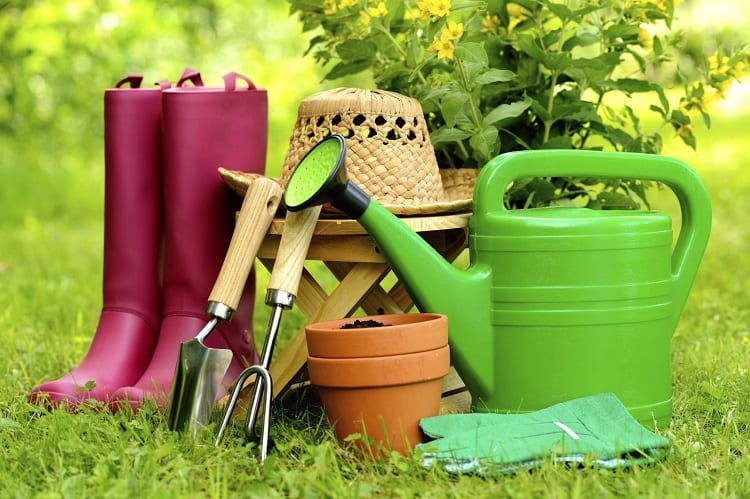
Now that you’ve got the main essentials for your foray into urban gardening, you’ll need some important gardening tools.
These include:
Hand trowel
A hand trowel is basically a small shovel. It has curved blades that are made of plastic or metal, enabling you to scoop soil as well as dig holes.
A hand trowel is a must if you’re gardening in containers, window boxes, or even raised beds.
Hand pruners
Pruning your plants is essential to keep them healthy.
It boosts air circulation in plants and enhances their branch distribution so that they can better repel disease.
Pruning is especially useful for roses, shrubs, as well as perennial flowers in your urban garden. But, when choosing pruners, they don’t come standard.
Consider which one fits your hand – you’ll find ones that are suitable for left-handed or right-handed people as well as ones that vary according to hand size.
There are two types of pruners:
- Bypass pruners, which have two blades that move in a scissor-like motion. These cut larger branches.
- Anvil pruners, which are less expensive than bypass pruners. They have a sharp blade that presses into a soft anvil, hence their name, and they’re great for softer branches.
Clothing Essentials
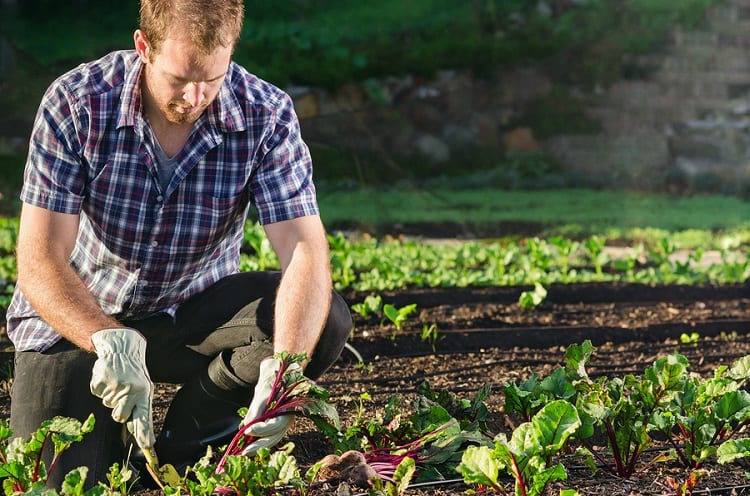
Don’t forget to protect yourself!
Although you might only be doing urban gardening on the balcony, make sure you wear a hat and SPF to protect yourself from the sun. And, always wear protective gloves!
Baskets (Or Other Containers)
You need to have some wicker or plastic baskets or buckets on hand to ensure you can collect whatever will go to waste, such as during the pruning process, as well as to carry your soil, compost, and other items.
Watering Can
You’ll need to have a quick and easy way to nourish your plants with water on a regular basis.
The urban gardener’s must-have item is the watering can. Now, you might be wondering which one you should get as there are many types.
Here’s a breakdown of how to choose the right watering can.
- If you choose metal cans, make sure they’re galvanized so that they won’t become rusty.
- Choose a can that has the capacity to match your physical strength. For example, approximately four liters of water will weigh eight pounds, and you should only carry it if you have the strength to do so. If it’s too heavy, then choose something a bit lighter. Remember that you should be able to carry and hold a watering can but also tilt it so that you can pour water into your plants without a hassle.
- Choose the right design. There are watering cans with different heads, such as ones with sprinkler heads. There are also watering cans with long or short necks. The ones with long necks can help you water hanging baskets and other hard-to-reach containers.
- Get an adjustable sprinkler attachment. You can use a rose attachment on your watering can change how much water you give your plants. This is important because sometimes you want to deliver a fine mist instead of a steady stream of water, such as if you’ve got new plants that have just sprouted.
What Plants Will Grow In The Shade?
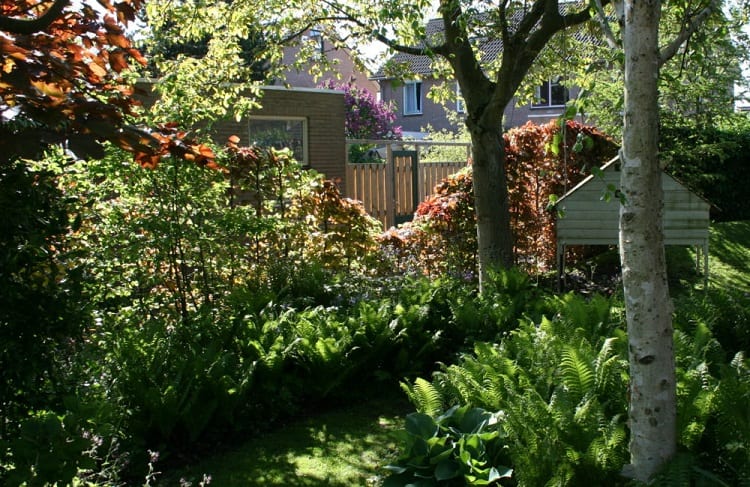
You’ll be pleased to know that some plants really don’t need any sun in order to thrive.
If you love the idea of having an indoor urban garden, these are the best buys.
Here’s a rundown of some plants that love the shade.
- Herbs, such as thyme and lemon balm, are really low-maintenance plants that don’t need to be in the sun.
- Plants such as ferns, peace lily, lucky bamboo, and amaryllis bulbs all grow wonderfully in shady conditions.
Beware Of Bugs!
Just because you’re growing plants indoors or on your balcony, it doesn’t mean you won’t have to deal with bug infestations that try to whittle away your plants.
Instead of spraying pesticides on them, go the natural route – it’s also better if you’re going to be eating what you grow.
Make your own DIY insect and bug repellent by mixing together a tablespoon of liquid dish soap with a quart of water and put it in a spray bottle.
Spray down the stems and leaves of your plants to keep bugs at bay!
Start An Organic Garden
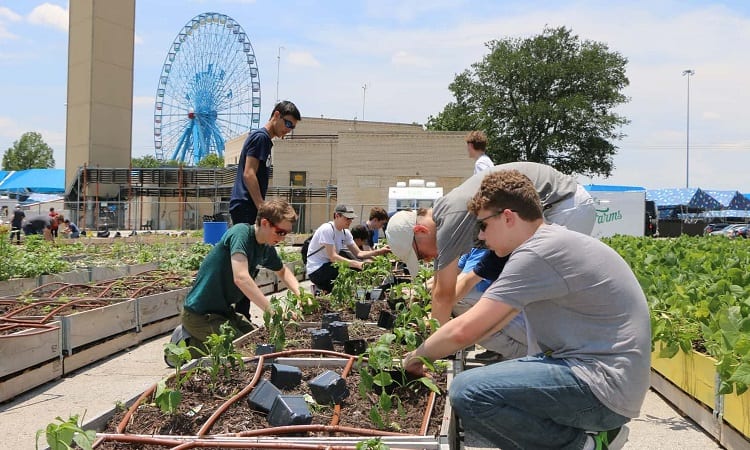
Having an organic garden means you skip harmful chemicals and pesticides.
The problem with chemical soil treatments is that they can enter your food if you’re growing fruits and veggies, and they can also kill good bacteria and other microbes that your soil needs to be properly nourished, as Good Housekeeping explains.
With that in mind, here’s how to start your own organic urban garden.
- First, test your soil. A home testing kit can help you to find out if your soil is healthy for plants by measuring its PH level as well as nutrients your plants need, such as nitrogen. You can buy these on Amazon.
- Make sure your soil as humus. This is an organic matter that enriches your soil. It can be made from compost, leaf clippings, grass clippings, and manure. Good Housekeeping reports, make sure you get the manure from local livestock that has been organically and humanely raised.
- Use organic mulch to prevent weeds. Straw and shredded leaves work effectively as organic mulch. You can also use lawn clippings, but avoid them on plants that don’t need a lot of nitrogen because they have high concentrations of it. FYI, plants that want a lot of nitrogen include lettuce and tomatoes.
- Avoid pesticides to kill pests. Sometimes if pests are being attracted to your plants, it’s a sign that the plant is struggling. It might need more water or sunshine, for example. Instead of spraying harmful pesticides on it, try to make your organic urban garden more diverse. This is enough to keep pests at bay because it doesn’t only give them one type of plant to feast on, as Good Housekeeping explains. It also attracts natural predators, such as lizards and birds.
Related Questions
Are “grow lights” any good?
If you really want to grow plants but you don’t have enough sunlight to help you, grow lights can be useful.
They give plants the same light the sun produces, but you’ll need to give veggies and flowers 12-16 hours of light a day.
What are some vegetables that are great for beginners?
There are many plants that are low-maintenance, such as potatoes, beetroot, herbs, lettuce, and turnips.
Start with those but progress to more difficult plants once you get the hang of urban gardening.
Conclusion
Urban gardening has many benefits, as we’ve seen in this article.
It’s also a positive, eco-friendly way to grow your own produce and perhaps even benefit those around you.
Even if you don’t want to have your own urban farm, micro-urban gardening that entails growing a few plants in a tiny space can still be beneficial, feed you and your family, and become a fun hobby.
Enjoy it!
